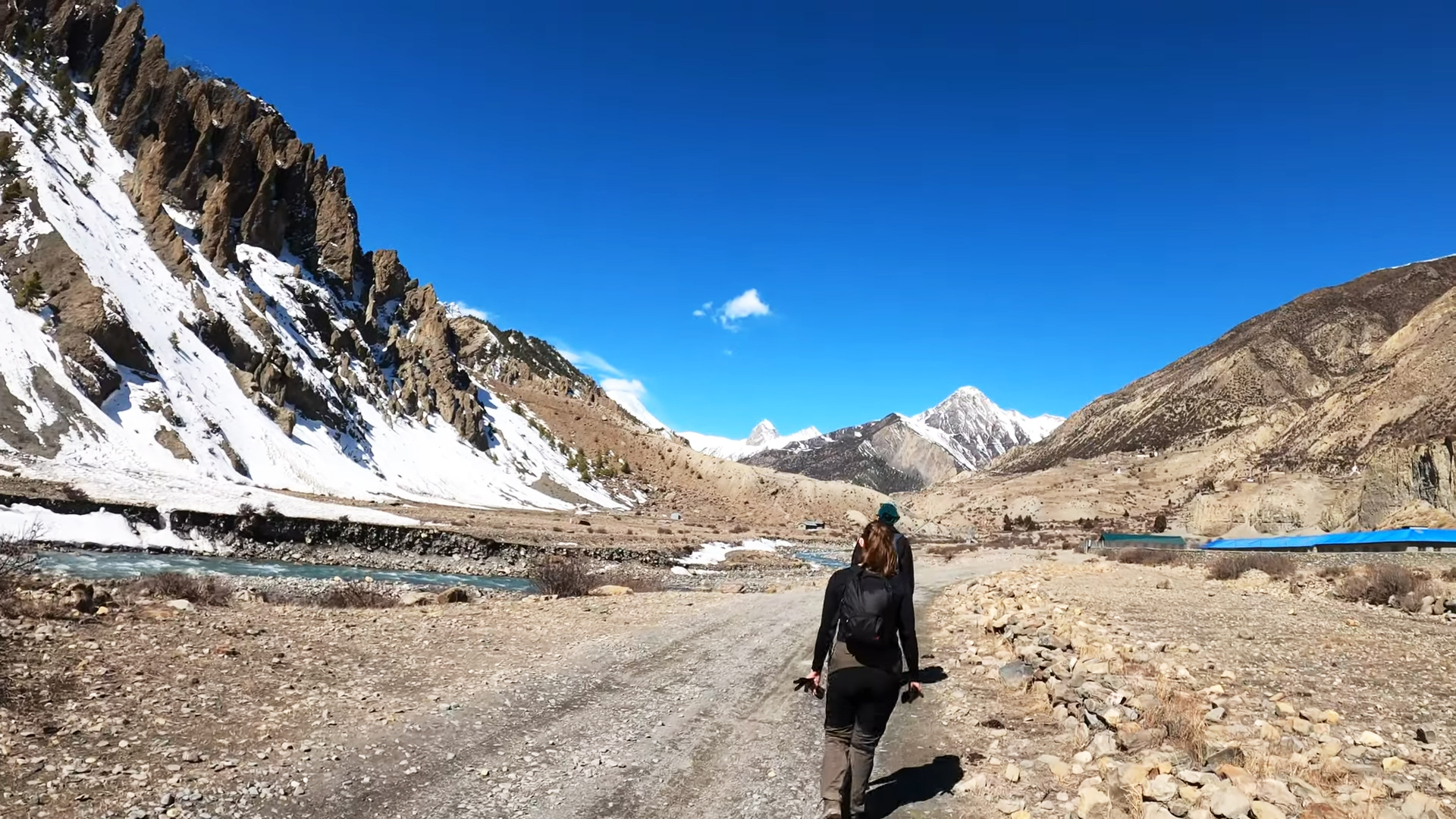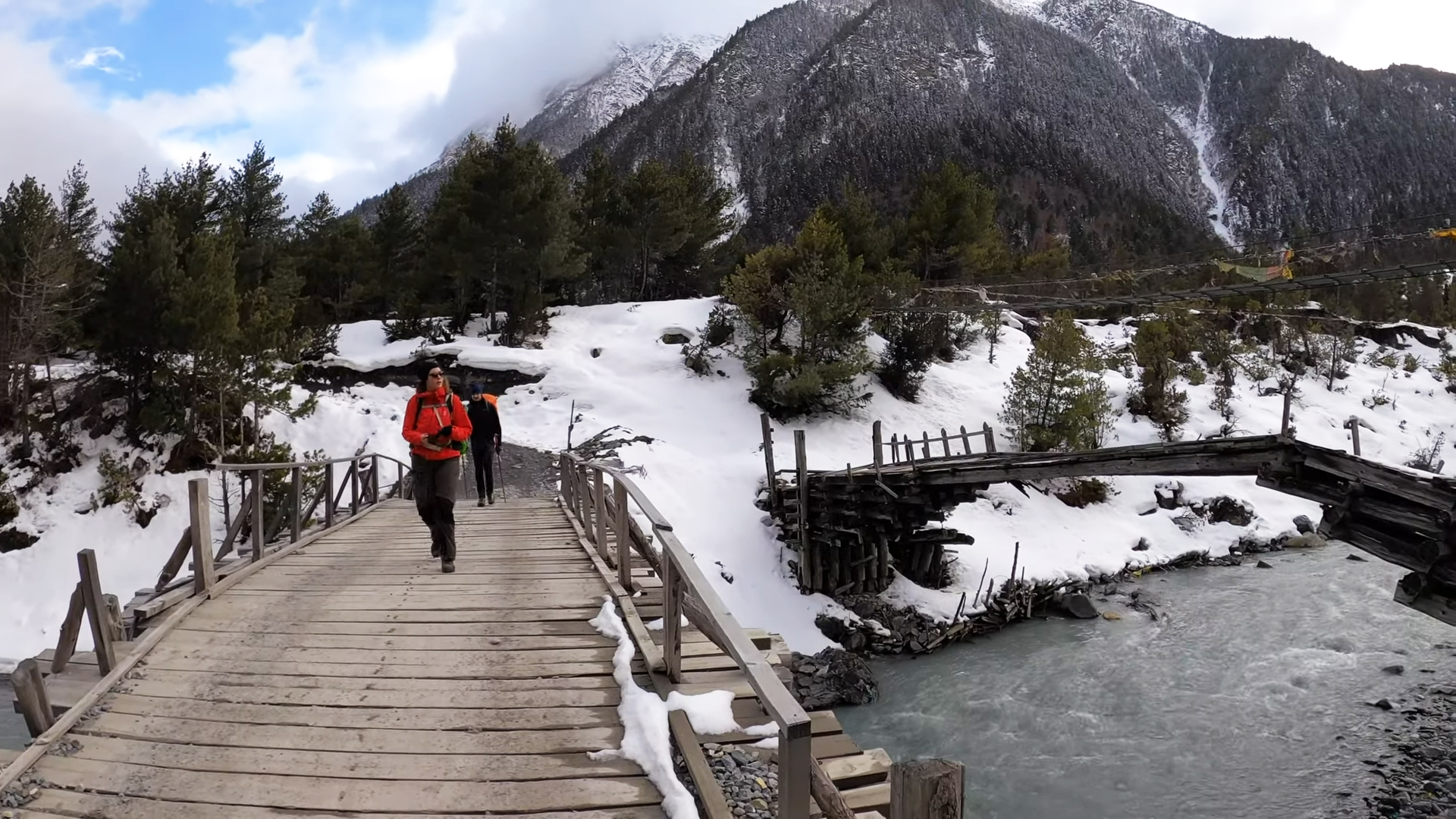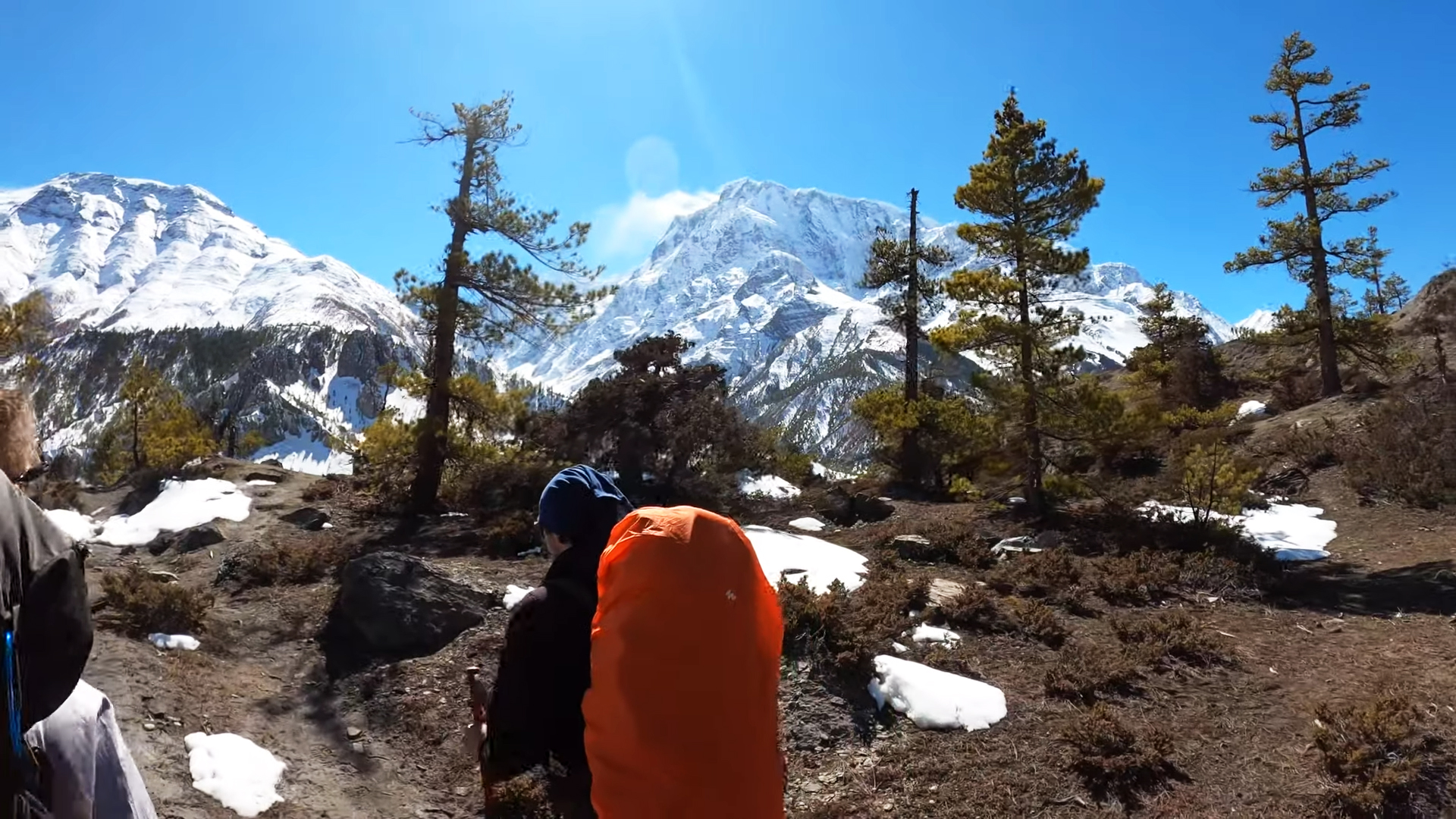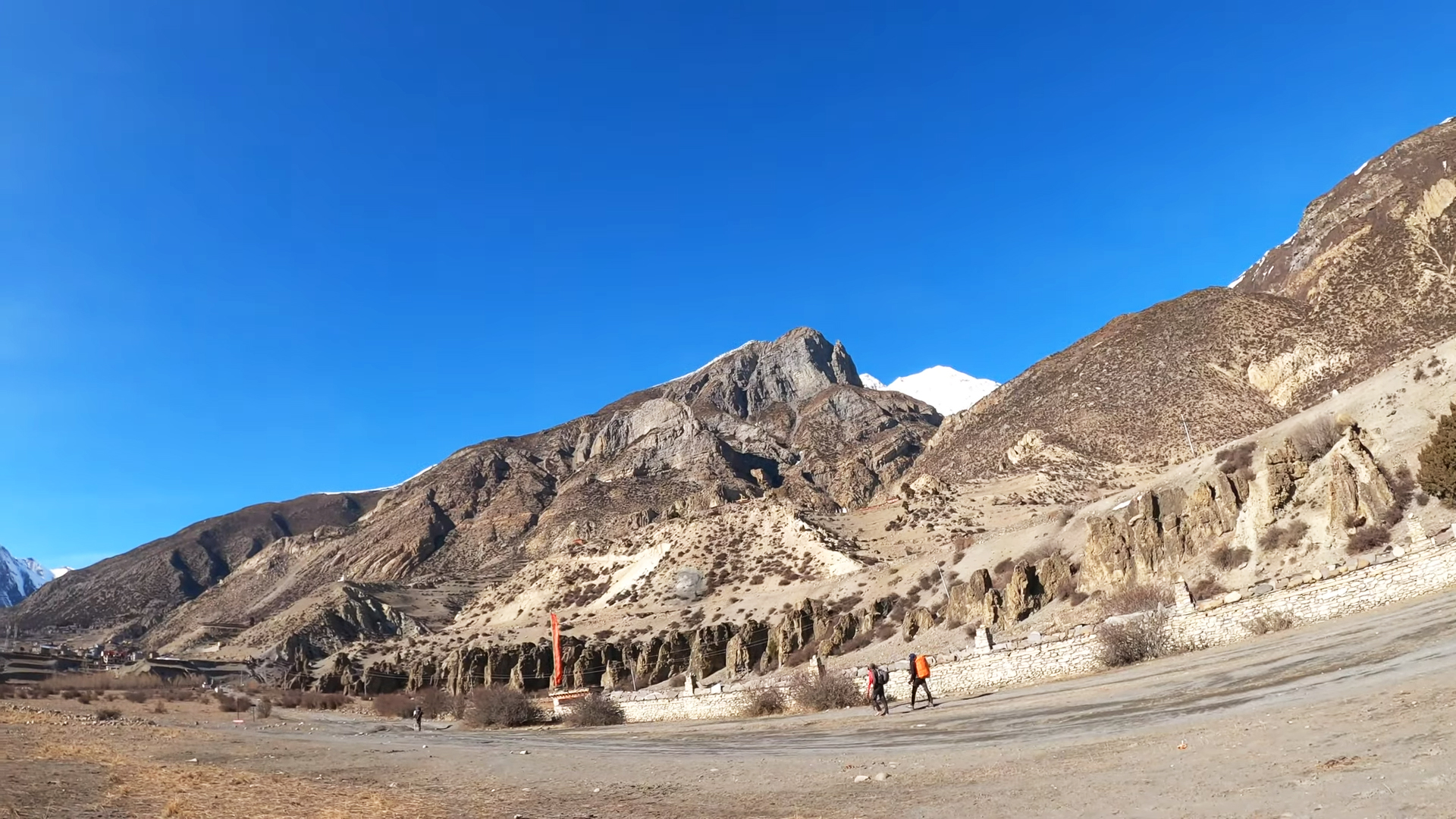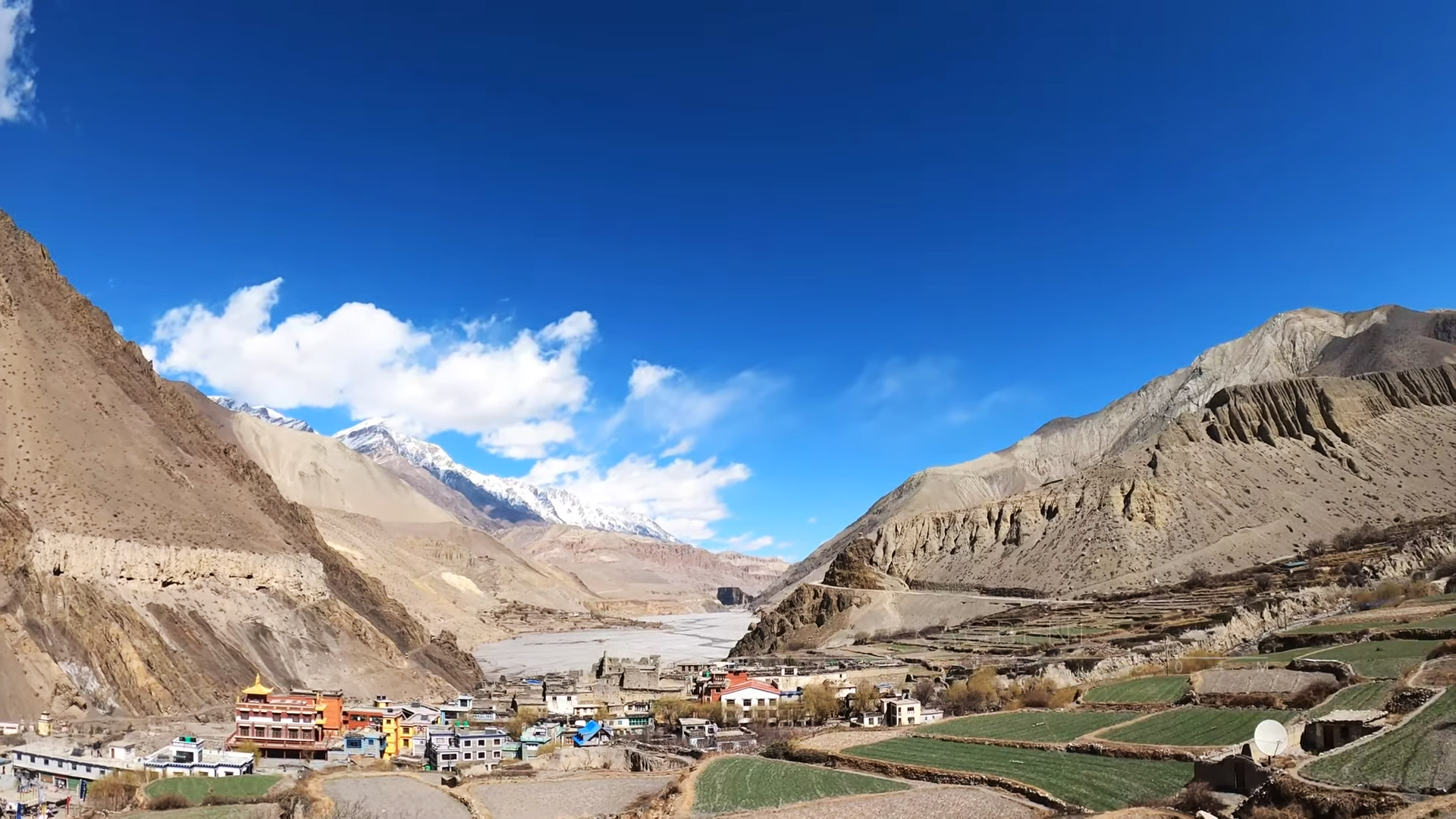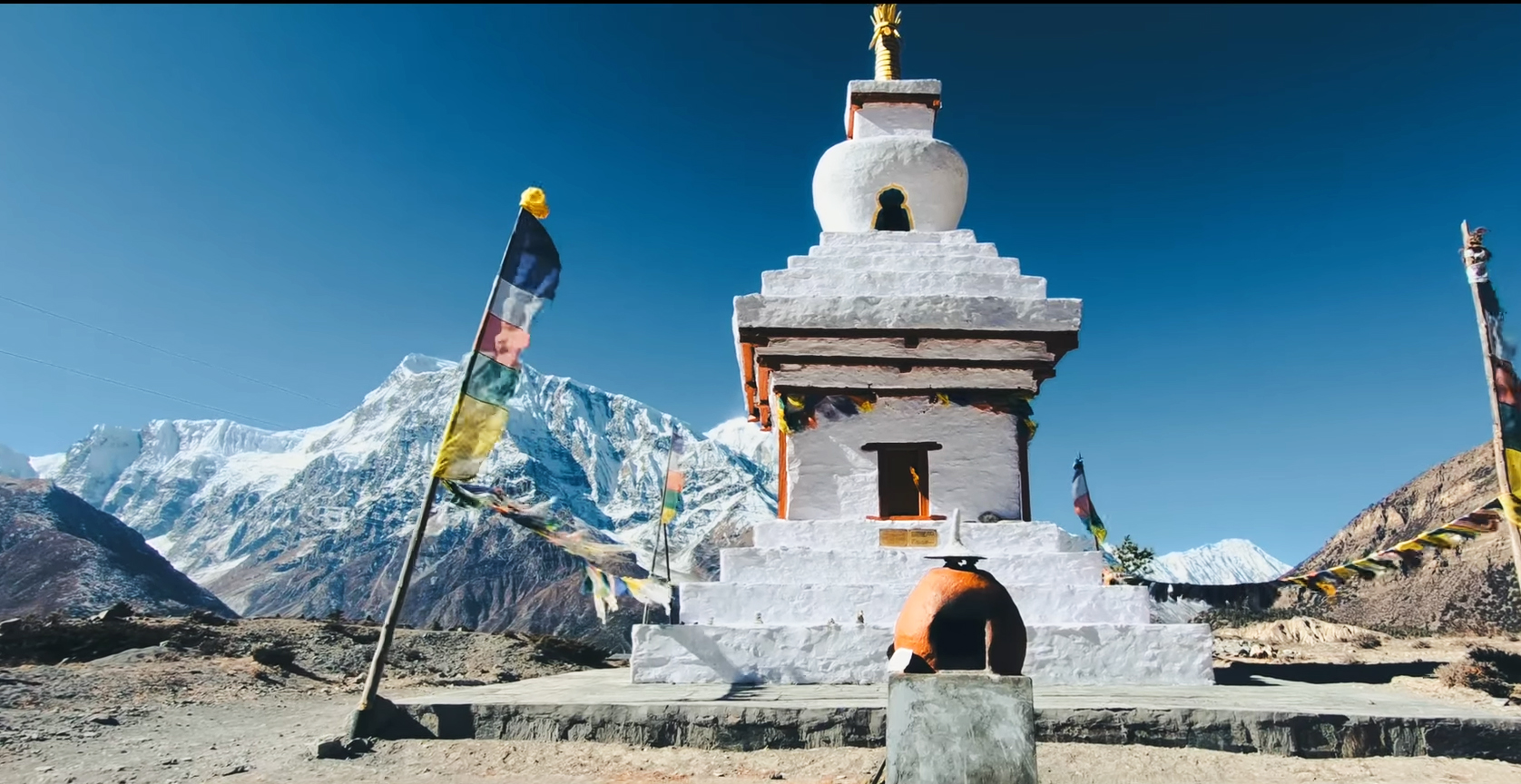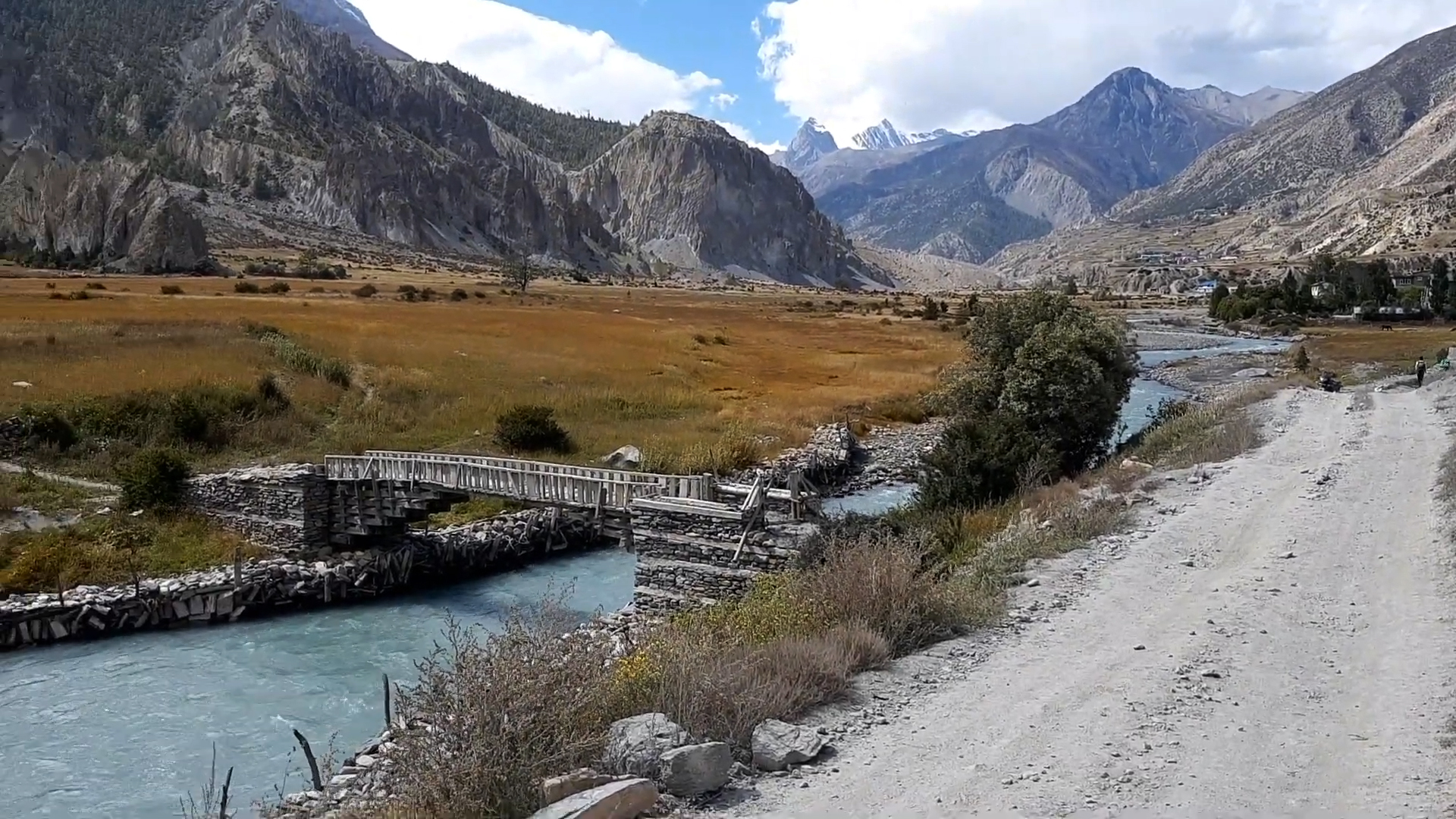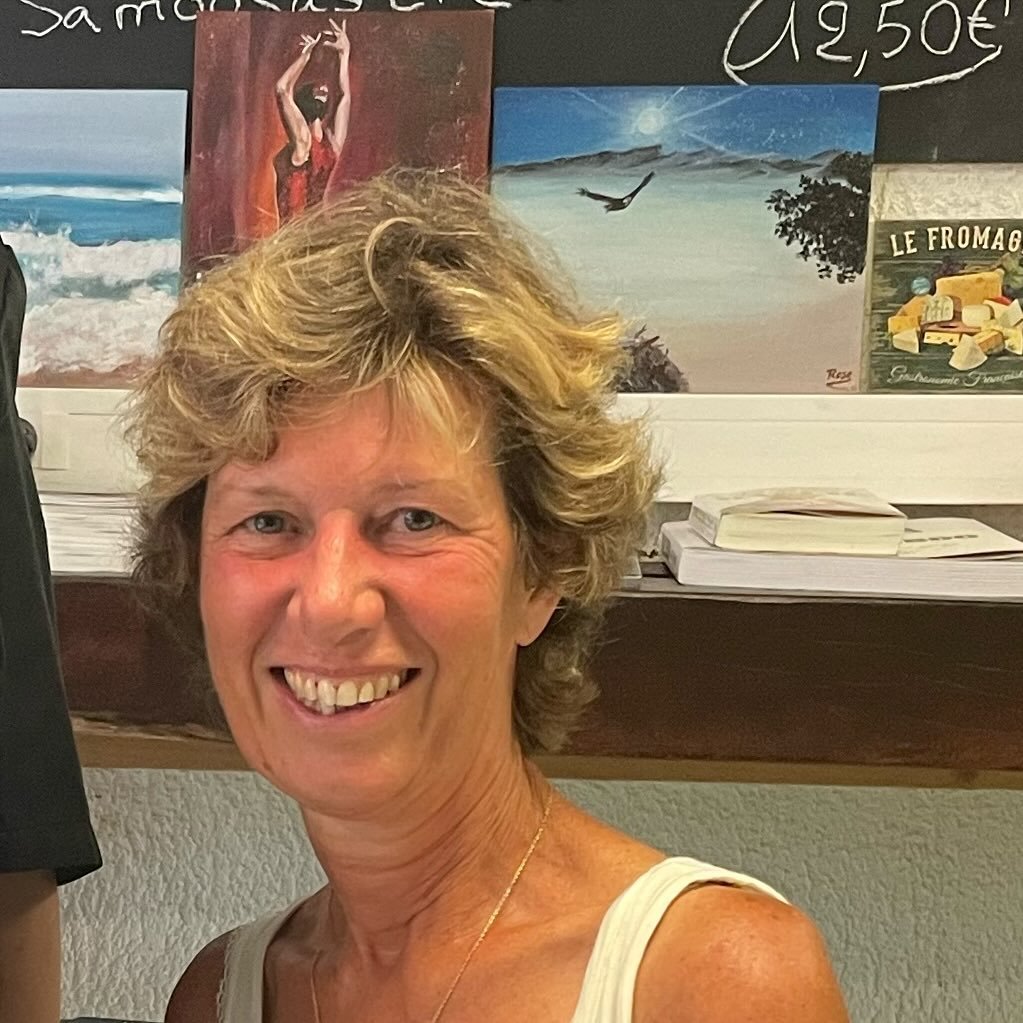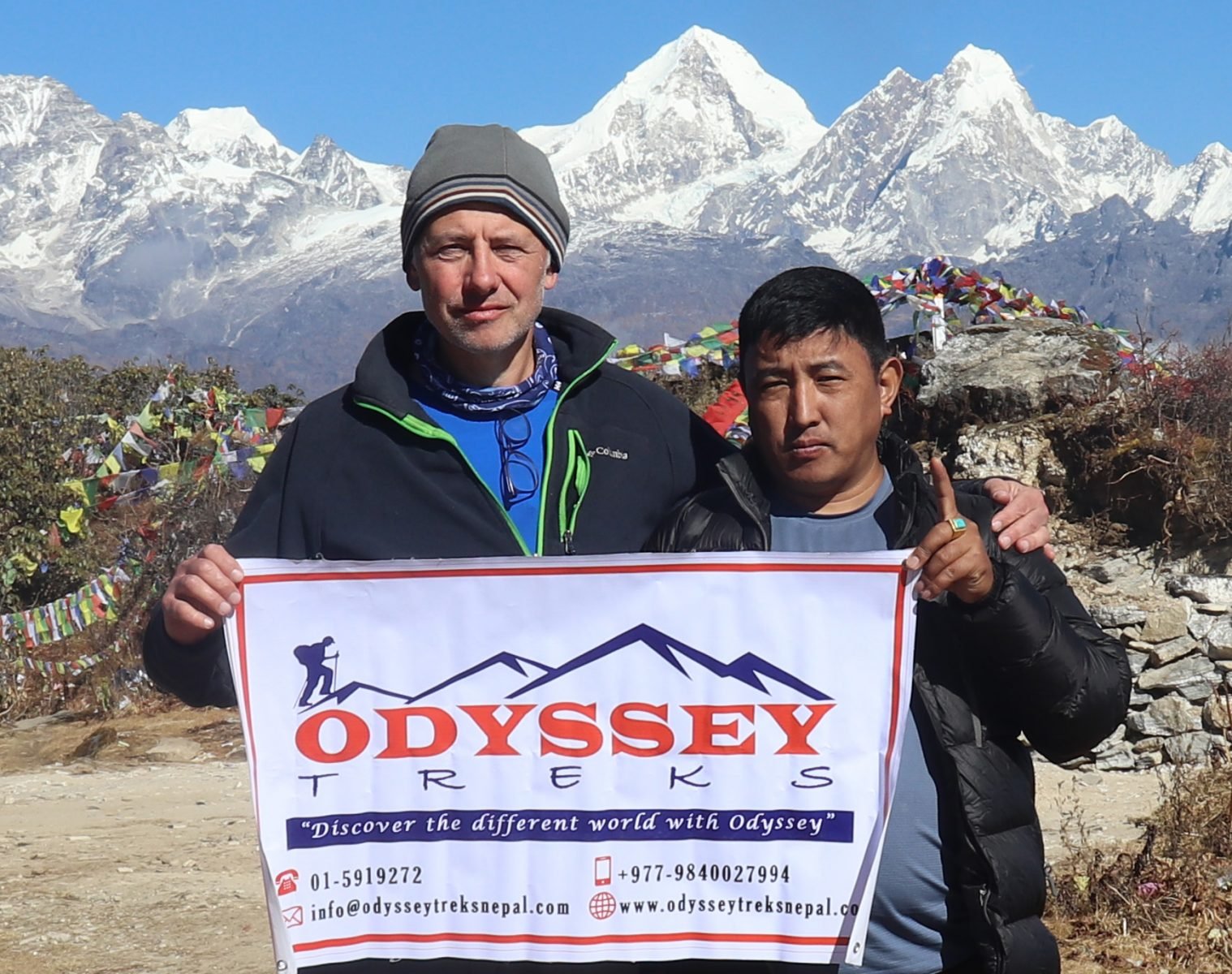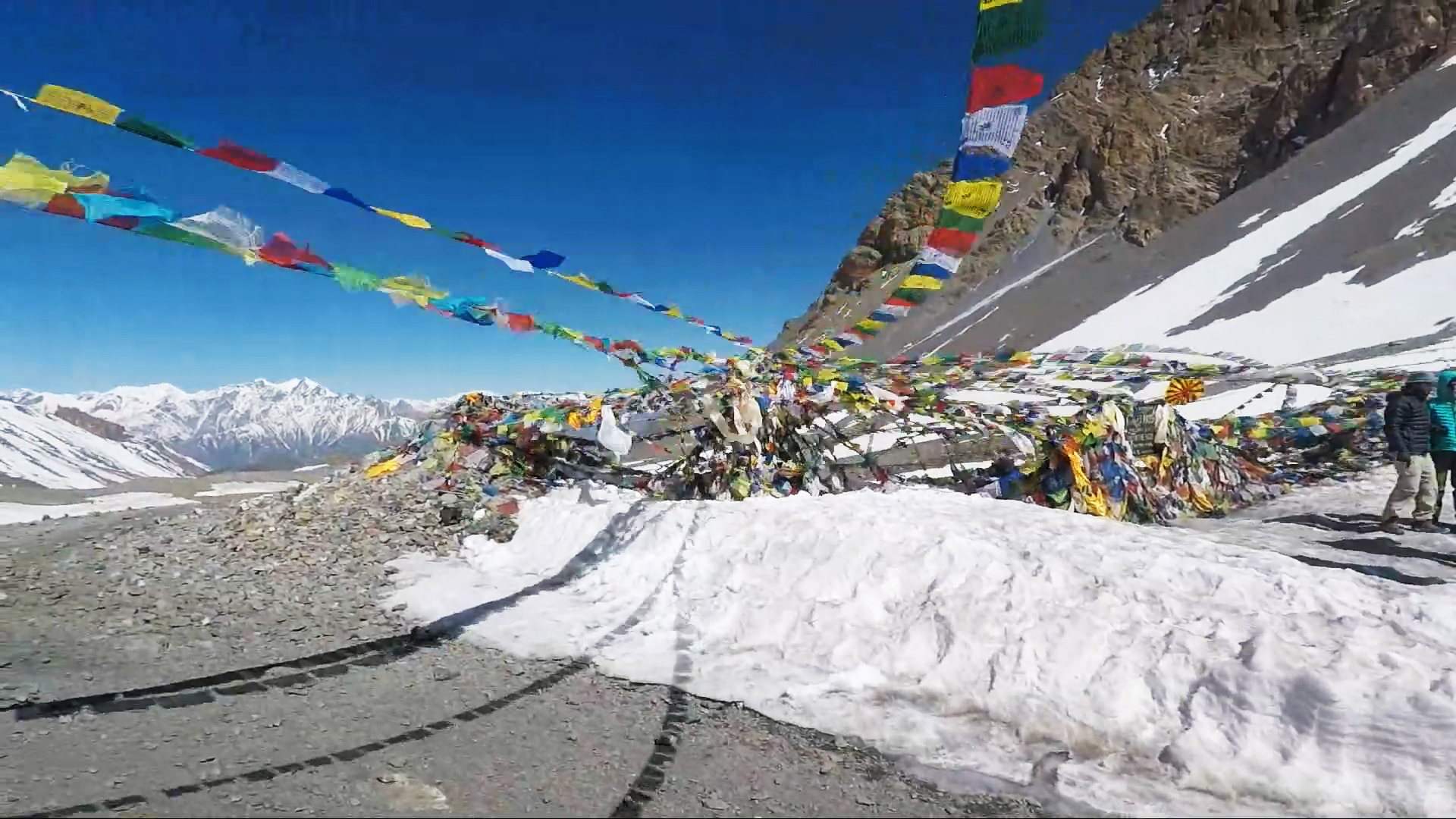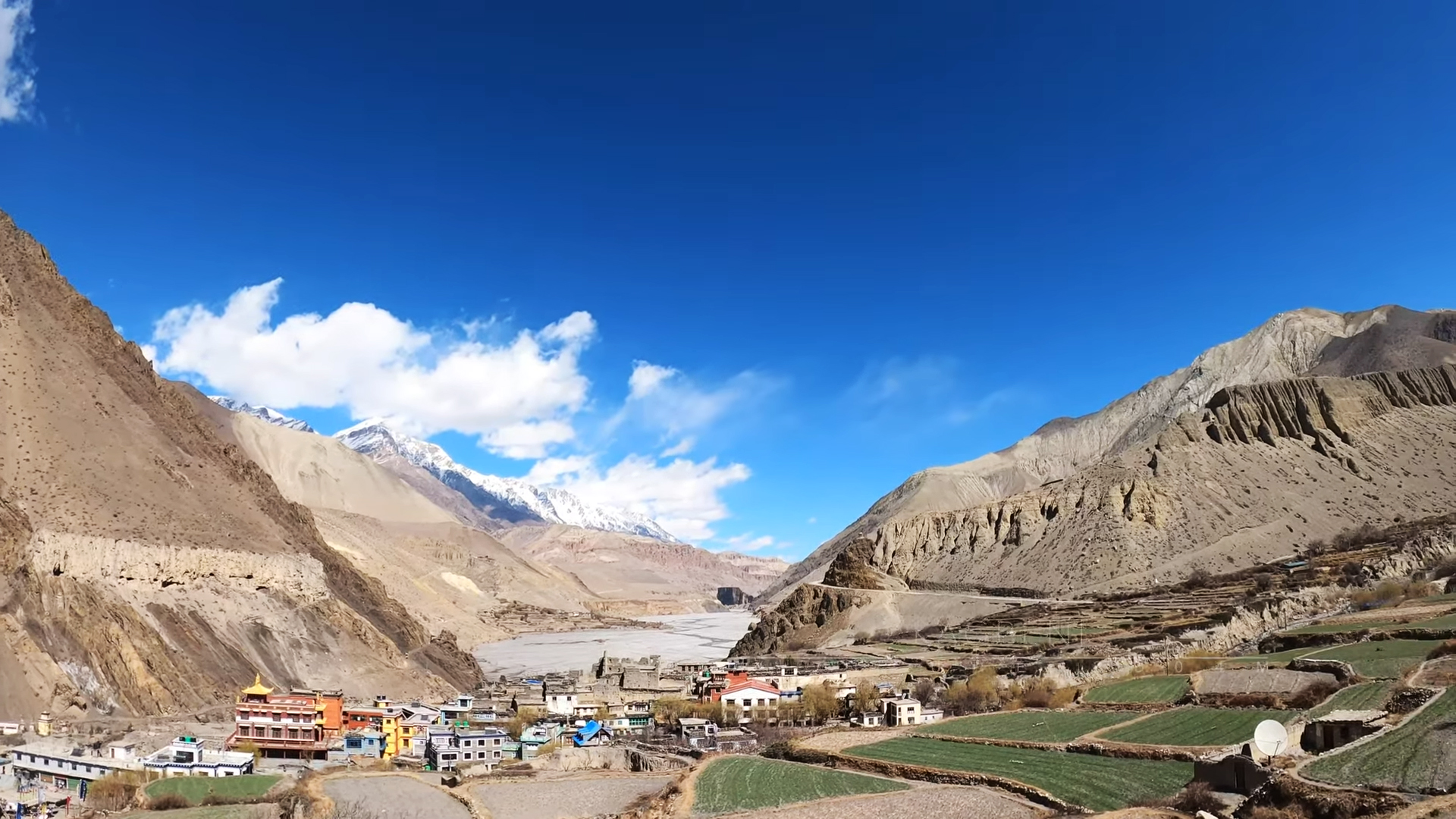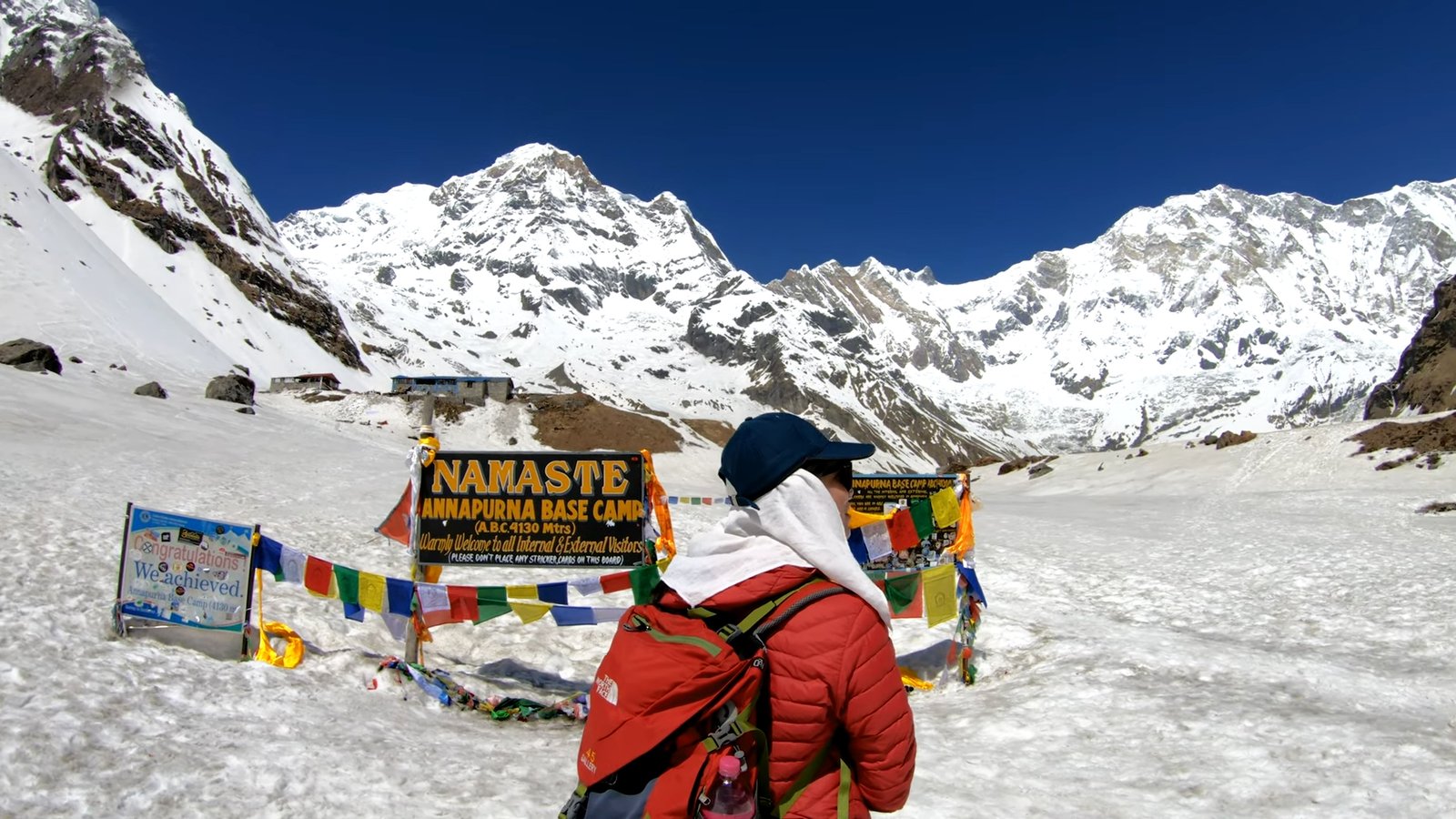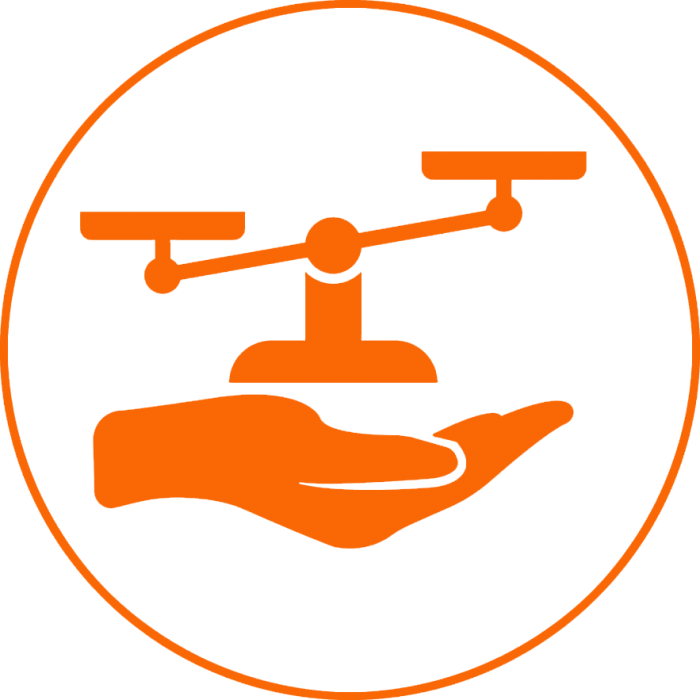Trip Overview
Annapurna Circuit Trek Comprehensive Guide
The Annapurna Circuit Trek is one of the most famous treks in the Annapurna region of Nepal. The Annapurna Circuit encircles the Annapurna Massif. This trek is also known as Annapurna Round Trekking. The trek completes the presentation of the best aspects of the Annapurna region, with its beautiful landscapes.
The Annapurna Circuit Trek is one of the best long-distance treks in Nepal. It takes you through lush forests, terraced farmlands, and barren landscapes to the foothills of the Himalayas. The Annapurna Circuit Trek is a testament to its incomparable natural beauty. The trek takes you from an altitude of 1,100 meters to the Thorong La Pass at an altitude of 5,416 meters (17,769 feet).
Thorong La Pass, the highest point
Thorong La Pass is the highest point of round Annapurna trekking. Located in the Annapurna Massif, this pass is one of the highest trekking passes in the world. This trek promises a unique blend of adventure, cultural exploration, and awe-inspiring scenery. Thorang La Pass is the main attraction of the Annapurna Circuit trek.
This high mountain pass is a challenging but rewarding section of the entire trek. The reward for conquering Thorang Pass is stunning 360-degree panoramic views of the Annapurna and Dhaulagiri mountain ranges. You cannot describe in words the view of the entire landscape seen during the trek. Thorong La Pass is also a symbolic achievement for trekkers on the Annapurna circuit. The challenges and rewards of crossing this pass make it a memorable adventure for Himalayan odyssey seekers.
The trekking route goes from Jagat to Chame, Manang, Thorangphedi, Muktinath, and Ghorepani. Along the trail, you also come across various picturesque ethnic villages. Those ethnic groups have their own local culture and traditions. The Annapurna Circuit lets you explore ancient monasteries and traditional villages. It also provides opportunities to interact with local communities in those villages.
Attractions of Annapurna Circuit Trek
- It is one of the world’s top hiking trails, with stunning mountain views.
- View of two beautiful river valleys, Masryangdi River Valley and Kali Gandaki River Valley.
- Hike through lush forests, terraced farmlands, and barren landscapes
- The challenging Throng La Pass at a height of 5416 meters is a spectacular and remarkable trekking achievement
- Spectacular view of Annapurna massif, Dhaulagiri, and Lamjung mountain ranges
- A short visit to Barge Monastery, the largest monastery in Manang region
- Visit Muktinath Temple, one of the revered temples for both Hindus and Buddhists
- A great place to relax in the natural hot springs in Tatopani
- An opportunity to immerse yourself in the indigenous Himalayan culture and lifestyle.
- Stunning view of the Himalayas from Poon Hill Viewpoint (3,210m).
- Explore the picturesque high desert valley of Manang.
- Fascinating landscapes of majestic lakes, glaciers, deep gorges and amazing waterfalls
- Jomsom – A bustling town and a major hub for trekkers
What can you expect from the Annapurna Circuit Trek?
Diverse Landscapes:
The trek takes you through a wide variety of landscapes. There are lush subtropical forests, terraced fields, alpine meadows, and barren high deserts. You will see a remarkable change in scenery as you pass through different ecological zones.
Mountain Views:
One of the main attractions of the Annapurna Circuit is the stunning panoramic views of some of the world’s highest peaks, including Annapurna, Dhaulagiri, Manaslu, and Machapuchare. The trek offers numerous vantage points that showcase these majestic mountains.
Thorong La Pass:
Crossing Thorong La Pass is a challenging but rewarding part of the trek. At an altitude of 5,416 meters (17,769 feet), it’s the highest trekking pass in the world. The pass provides breathtaking views of the surrounding mountains, and reaching the summit is a significant achievement for trekkers.
Cultural Exploration:
The Annapurna Circuit introduces you to the rich cultural diversity of the region. You’ll pass through traditional villages inhabited by different ethnic groups, including Gurung, Thakali, and Manangi people. Along the way, you can visit ancient monasteries and chortens and experience the local way of life.
Challenges and Rewards:
The Annapurna Circuit Trek is a physically demanding journey, especially when crossing high-altitude passes. Proper acclimatization is crucial to avoiding altitude sickness. The challenges are rewarded with the unparalleled beauty of the Himalayas and a sense of accomplishment.
Tea Houses and Villages:
Accommodation on the Annapurna Circuit is typically in tea houses or lodges run by local families. This provides an opportunity to interact with the locals, learn about their customs, and experience the warmth of Nepalese hospitality.
Hot Springs:
The trek takes you to natural hot springs in Tatopani, where you can relax and rejuvenate in the warm, mineral-rich waters.
Diverse Flora and Fauna:
The region is home to a wide range of plant and animal species. In lower altitudes, you’ll find rhododendron forests, while higher up, the landscape becomes more rugged and arid. Keep an eye out for various bird species and, if you’re lucky, some wildlife like blue sheep and Himalayan tahr.
Local Cuisine:
You’ll have the opportunity to savor local Nepali and Tibetan cuisine along the trail. Dal Bhat (lentil soup with rice), momos (dumplings), and various noodle dishes are commonly enjoyed by trekkers.
Weather Considerations:
The weather can vary depending on the season. The best times for the Annapurna Circuit Trek are spring (March to May) and autumn (September to November), when the weather is generally stable. Winter treks are possible but may be colder, and summer (monsoon) treks can be challenging due to heavy rainfall.
Duration:
The trek typically takes around 15 to 20 days, depending on the specific route taken and the acclimatization schedule.
Difficulty:
Yes, this high-altitude trek can also be somewhat challenging. However, with proper planning and preparation, it is accessible to many with a good level of fitness.
Benefits of booking Annapurna Circuit Trek with Odyssey
- Free airport arrival pickup and departure transfer service by private transportation
- Odyssey Trek duffle bag and t-shirt as souvenirs
- Map of Annapurna Circuit Trek
- An oximeter is used to check blood oxygen saturation levels at high altitudes.
- Essential medical kits for emergencies
- Free extra luggage storage arrangement during the trek.
- Sleeping bags and Down jacket arrangements for trekking if you do not have your own
Is the Annapurna Round Trek suitable for you?
The Annapurna Circuit Trek is one of the most challenging treks in Nepal. This trip takes you around the Annapurna massif. Many factors determine whether the Annapurna Circuit trek is right for you. It depends on many factors, including your physical fitness, hiking experience, and personal preferences. To determine whether a trek is right for you, consider the following factors:
Physical Fitness:
Round Annapurna is a challenging trek. It involves both ascent and descent to reach higher altitudes. Constant long day hikes at high altitudes are also physically demanding. Being in good physical shape is important to handle the demands of trekking at high altitudes. So, make sure you have a good level of fitness and are comfortable on a long day of high-altitude trekking. Regular cardiovascular exercise and strength training are beneficial in preparing for this hike.
Height Considerations:
The trek takes you to an altitude of over 5,000 meters. High-altitude treks carry the risk of altitude sickness. So, it is important to be aware of the risks associated with trekking and take necessary precautions. Acclimatization is important to avoid altitude sickness. We recommended to acclimatize properly by taking rest days and ascending gradually.
Trekking Experience:
Although the Annapurna Circuit is suitable for moderately experienced trekkers, some sections can be challenging. Previous hiking experience is beneficial but not mandatory. Hiking experience can be helpful, especially at high altitudes. Many people successfully complete the trek without extensive prior experience. However, being physically fit and mentally prepared will enhance the overall experience. If you are a beginner, consider starting with shorter and less strenuous treks before attempting the Annapurna circuit.
Duration:
Annapurna Circuit is a long-duration trek. The duration of the trek depends on your pace and rest days. However, it takes about two to three weeks to complete. So, make sure you have enough time to complete the trek.
Terrain and Climate:
The trek includes rocky paths, forest trails, high mountain passes, and varied terrain. Additionally, the weather at high altitudes can change unpredictably. So, prepare for rugged, high-altitude trails and different weather conditions.
Accommodations and basic facilities:
Accommodations on the Annapurna Circuit are mostly basic tea houses or lodges. Food is also more basic and limited, especially at high altitudes. If you are comfortable with simple food and accommodation, this trek may be suitable for you.
Personal Interests:
It is important to be clear about your interests and expectations for the trek. The trek offers stunning snow-capped mountain views, diverse landscapes, and cultural experiences. So, make sure that the Annapurna Circuit Trek matches your interests and expectations.
Annapurna Circuit Trek starts.
After breakfast on the first day of the trek, we drive from Kathmandu to Jagat. The route takes us to Jagat from Kathmandu along the picturesque Trishuli River. You will see terraced farms, traditional villages, and many snow-capped peaks during the journey. The drive from Kathmandu to Jagat may take 8 to 9 hours. But sometimes, it may take longer due to traffic, road conditions, and weather. The journey involves winding mountain roads, so the pace may be slower than flat terrain.
On the second day of the journey, we climb up a steep hill and enter Tal village in the Manang region. The trek includes a mixture of ascent and descent. The trail takes us through lush green forests, traditional villages, and along the banks of the Masryangdi River. After crossing the suspension bridge and a short climb, we reach Dharapani.
The third day of the journey takes you through the alpine country. You will reach Chame through traditional villages like Bagarchap, Danakyu, Thanchow, and Koto. During the trek, you will witness the forests, farms, and vistas of Lamjung and Annapurna’s second peaks. After 6 to 7 hours of walking, you will reach Chame village at 2670 meters.
Upper Pisanga
The fourth day of the Annapurna circuit takes you to a beautiful destination, Upper Pisan. The trek from Chame to Upper Pisang is a gradual ascent, and the elevation gradually increases. After crossing the suspension bridge over the Masryangdi River, the route offers stunning views of the mountains. The route reaches Chame through Talekhu and Bhratang Dhikur Poikhari villages. Dhikur Pokhari provides a magnificent view of Annapurna II, Pisang Peak, Chulu Peak, Tilicho Peak, and many other peaks.
The route starting from Pisang the next day is complex, with many steep climbs and twists. As the altitude increases, you will notice that the air becomes colder, drier, and harsher. You will also get a chance to learn about Buddhist culture as you pass through Tibetan settlements. The trail finally leads to Manang Bazaar.
Acclimatization day at Manang
According to the Annapurna Circuit Trek Itinerary, the sixth day is rest. Manang is an important stopover for trekkers. This location allows hikers to acclimatize before attempting higher altitudes. Today, you can visit Gangapurna Lake and its surroundings to acclimate yourself. Although the Gangapurna Lake route is challenging, the scenery is fantastic.
The next day, you pass through the small settlement of Tenki Manang. While trekking, you will reach Gunsang, a small village with a tea house. The altitude gradually increases, and you can see the changes in the landscape. After walking, you will reach the Yak Khark at a height of 4,110 meters. Yak Khark is a beautiful village in a stunning alpine environment, surrounded by mountains.
After breakfast, you will start trekking to Thorang Phedi the next day. The distance from Yak Khark to Thorang Phedi is about 6-7 kilometers, and it usually takes 4-5 hours to complete. The trail includes both ascents and descents. You will hike through alpine landscapes and rocky paths. Thorang Phedi is at an altitude of about 4600 meters. Awareness of the potential effects of high-altitude sickness is essential. Thorang Phedi is a small settlement with basic tea houses and lodges. It is an important rest stop for trekkers before attempting Thorong La Pass.
Crossing Thorang La Pass
The ninth day of the journey will be the toughest. You will trek from Thorang Phedi to Muktinath via Thorang La Pass on this day. Thorang La Pass is an essential and challenging section of the Annapurna Circuit trek. The high altitude makes the climb to Thorang La Pass physically demanding. Being aware of altitude sickness is crucial while passing the 5,416-meter mark. It takes around 8 to 9 hours to reach Muktinath, passing Thorang La. Muktinath Temple is a sacred pilgrimage site for both Hindus and Buddhists. At Muktinath, you can explore its cultural significance.
The next day, you will reach Jomsom, enjoying the scenic beauty of the Kali Gandaki river valley. The route passes charming villages, allowing you to experience local culture and hospitality. The trail to Jomsom is less complicated as most roads are downhill. Jomsom offers a clear view of Tilicho Peak, Nilgiris, and Dhaulagiri.
You will reach Tukuche on the eleventh day of the journey and Ghasa on the twelfth day. As you descend from Ghasa to lower altitudes on the thirteenth day, the subtropical vegetation becomes more striking. The beautiful, famous Rupse waterfall is along this route. Tatopani offers natural beauty, cultural experiences, and a relaxing change in natural hot springs.
Poon Hill, a popular viewpoint
The trail takes you through beautiful rhododendron forests and terraced fields. Ghorepani is a popular stop for trekkers. Poon Hill (3,210) near Ghorepani is a famous viewpoint. This place offers a breathtaking view of the sunrise over the Dhaulagiri mountains.
Your destination is Dhandruk for the 16th day and Pothana for the seventeenth day. The next day, you will start your Annapurna circuit trek from Pothana to Phedi after breakfast. After reaching Phedi, your trekking is complete, and you will take a private vehicle to Pokhara. There are various ways to spend free time in Pokhara. You can go shopping or explore the area around your hotel. On the last day of the trip, you will drive back to Kathmandu in the morning.
Foods and Accommodations during Annapurna Circuit Trek
You can find various tea houses, lodges, and guesthouses along Nepal’s popular Annapurna Circuit trekking route. These teahouses and lodges provide food and accommodation for trekkers. Teahouses are a type of basic guesthouse. They offer rooms with basic amenities such as beds, blankets, and possibly a shared bathroom.
Although the facilities are basic, they provide a comfortable resting room after trekking. At relatively high altitudes, facilities may be more limited. Some larger villages have guesthouses that offer more facilities than tea houses. They offer private rooms, attached bathrooms, and sometimes even hot showers.
Tea houses and lodges usually have a menu offering a variety of local as well as international dishes. You can find foods like dal bhat (lentil soup with rice), noodles, momos, pasta, pizza, and more. Food in teahouses is usually freshly prepared and often has communal dining areas. They also provide packed lunches to carry on day trips if needed. These typically include boiled eggs, sandwiches, fruit, and energy bars.
When moving to higher altitudes, the availability of certain foods may be limited. Prices may also increase due to logistical transportation challenges. It is possible to stay in these teahouses without prior booking. However, booking in advance is a good idea during peak trekking seasons. You can buy bottled water or use water purification tablets while trekking. Boiling water is also a common practice in tea houses.
Difficulty level of Annapurna Circuit Trek
The Annapurna Circuit is a 19-day-long trek covering various terrains. The route takes you through lush forests and terraced areas to high mountain lands. The trek involves a lot of tough uphill and downhill to reach the maximum altitude of Thorong La Pass (5,416m).
This is a moderate-to-challenging trek, depending on your fitness level and experience. The first part of the hike is relatively easy. The trail follows the Masryangdi River through green forests and terraced plains. However, gradually, the trail becomes more challenging with steeper ascents and descents.
Especially the ascent and descent of Thorang La Pass are the most challenging. The risk of altitude sickness increases with the high altitude of the trek. So, it is essential to be aware of the symptoms of altitude sickness. Overall, the Annapurna Circuit is a physically and mentally demanding trek. Good fitness, proper planning, and proper gear are required for an enjoyable and safe trip experience.
The best time for the Annapurna circuit trek
The best time to trek the Annapurna circuit is pre-monsoon (spring) and post-monsoon (autumn). During these seasons, the weather is relatively stable, creating favorable trekking conditions. Spring (pre-monsoon) includes the months of March, April, and May. During this time, the temperature is mild, and the sky is clear.
Rhododendrons and other wildflowers are blooming, adding beauty to the landscape. Warmer temperatures at lower altitudes make trekking enjoyable. Autumn (after the monsoon) includes the months of September to November. This season also has stable weather conditions with clear skies that provide excellent visibility of the mountains.
Trekking is not recommended during the monsoon season (June to August) due to heavy rains and possible landslides. Likewise, winter (December to February) can bring freezing temperatures and snow at high altitudes, making the trail challenging. It is essential to always check the current weather conditions and trail updates before going on a trek.
Cost of Annapurna Circuit Trek
The cost of the Annapurna Circuit Trek package depends on the duration, services included, and quality of food and accommodation. We have also categorized the Annapurna Circuit Trek Packages based on the services provided. Food, accommodation, and transport services in the package vary, but the rest are the same. We have three types of packages, which include all expenses for trekking.
Budget Package:
It is a budget-friendly package. The package includes services at guest houses in the city and basic teahouses in the mountains. Teahouses are locally run and provide basic accommodation and food. The budget package includes the usual three meals a day but does not include tea or other drinks.
Local transport for the start point and end point of the trek is included in the package. This budget package service is available for US$1300 only. Note: The package is available at this price if there is a minimum group of two people.
Standard Package:
We have a standard package option if you want better service than the budget-friendly package. This package offers food and accommodation at the best tea houses and lodges on the trail. You can choose meals based on a full-open menu.
Rooms with attached bathrooms are available in nice teahouses. Unlimited tea, coffee, and hot water are included in the package. We provide private vehicles for transportation. This package is available for US$1700. Note: The package is available at this price if there is a minimum group of two people.
Luxury package:
If you are thinking of a luxury trek, then don’t worry; we also have the Annapurna Circuit Trek Luxury Package. This package offers luxury service on a trip to the high mountains. We arrange luxury hotels (resorts) in available locations. You can get the luxury package for just US$2400. Note: The package is available at this price if there is a minimum group of two people.
Visit also: Nepal Buddhist Tour in Just 9 days, Cost, Package, Kathmandu.
You may also like to visit: Nepal Pilgrimage Tour in just 10 days, itinerary, Kathmandu, cost.
Trip Itinerary
Drive Kathmandu to Jagat (1,100m) - 8 to 9 hours.
Jagat to Dharapani (1,860m) – 6 to 7 hours walk.
Dharapani to Chame (2,670m) – 6 to 7 hours walk.
Chame to Pisang (3,300m) – 6 to 7 hours walk.
Pisang to Manang (3,570m) – 6 to 7 hours walk.
Rest day in Manang.
Manang to Yak Kharka (4,110m) – 4 to 5 hours walk.
Yak Kharka to Thorong Phedi (4,600m) – 4 to 5 hours walk.
Thorong Phedi to Thorong Pass (5,416m) and descends to Muktinath (3,800m) – 8 to 9 hours walk.
Muktinath to Jomsom (27,43m) – 5 to 6 hours walk.
Jomsom to tukuche (2,550m) - 5 to 6 hours walk.
tukuche to ghasa (2,010m) - 6 to 7 hours walk.
Ghasa to Tatopani (1,190m) - 6 to 7 hours walk.
Tatopani to Shikha (2,830m) – 5 to 6 hours walk.
Shikha to Ghorepani (2,750m) – 4 to 5 hours walk.
Ghorepani to Ghandruk (1,940m) – 8 to 9 hours walk.
Ghandrunk to Pothana (1,900m) – 6 to 7 hours walk.
Pothana to Phedi (3 to 4 hours walk) and drive to Pokhara (30 minutes).
Drive Pokhara to Kathmandu – 7 to 8 hours.
Why not list the price?
Each client's needs may be different. The price of the trip varies according to the size of your group and the service you want. The cost of the trip is calculated according to the type of service and accommodation chosen by our customers.
Each trip is customized to fit the client's needs and group size, so the price of each organized trip is different. Please let us know the service you want and the size of the group. We create trips to suit your taste and travel budget per your requirements. Hope you find our price calculation reasonable according to your needs and preferences.
Frequently asked questions about this trip
How difficult is the trek?
The difficulty depends on where and how long you want to trek. The short trek is easy while the long trek requires some physical fitness.
What is altitude sickness?
Altitude sickness is normally known as acute mountain sickness. This can happen when people rapidly climb up to an altitude of more than 3000 meters. We ensure minimal risk by adding rest to our trekking itineraries. Most people will feel some effects of altitude, some shortness of breath and possibly light headache, this is normal enough. Acute mountain sickness patients are quite different and usually have a serious headache, sickness, and lose awareness. In almost all possible cases there are sufficient warning signs to take action properly. Descending to a lower altitude is usually enough to prevent any further problems.
What type of accommodation is available during the trekking?
There are mainly tea houses and lodges available for trekking and they are usually made using local materials and are very comfortable. These accommodations are often family-run and usually provide single and double rooms. The dining room is on the ground floor and is often on fire. All food will be cooked in order in the family kitchen. Toilet facilities are sometimes separate and sometimes outside. Most lodges provide mattresses and blankets. It's a good idea to always have a sleeping bag, which can be useful, and perhaps an inflatable pillow.
How long do we walk every day on trekking?
Trekking programs are classified into three different categories: soft, moderate and hard. Soft treks are only about 7 days to 10 days in duration. They generally do not go above 4000 meters; you can expect to walk about 4-5 hours each day. Moderate treks are challenging enough and long treks that go to the high hill country. Physically exhausting, this involves trekking along the cliffs of the mountains for about 6-8 hours. Harder treks are longer treks that go farther away from the general abode of trekkers and tourists. These physically challenging treks involve walking for 7- 9 hours each day.
How much weight do I need to carry on the trek?
You carry some of your personal belongings, such as warm clothing, water, snacks, sun block, cameras and more. Generally, these items will be lightweight, from 5 to 10kg (10 to 20 pounds). Our porters are available for other heavy goods and for your information one porter would be sharing by two people. The maximum weight carried by one porter is total 20 kg. this means 10 kg. per person is allowed for the trek. In case if you wish to carry more than this weight then you need to hire additional porters.
What is the best time for trekking in Nepal?
October and November are considered as the best times for trekking in Nepal due to dry season. December and January are also considered good times for trekking but it is extremely cold at high altitudes.
Google Reviews
Guest reviews
Thank you a lot for your organization about my trek. It was a superb experience; all was perfect. Karma is a very nice person and a good guide. I appreciated trekking with Odyssey (a reliable Nepal trek operator). If I come back to Nepal, I will be happy to...
Have just returned from my fourth trip to Nepal and as always Odyssey Treks organized everything superbly. We visited Makalu relatively late in the season and were rewarded with empty trails and amazing weather. Karma was as entertaining, friendly, and informative as ever along with Ang Dawa Sherpa who...

